| The Microsoft Academic search tool is an open discovery service for scholarly scientific works including citation relationships between works, authors, institutions, places, and subject fields. |
Microsoft is quietly developing an open discovery service for scholarly scientific works called Microsoft Academic based on Microsoft Research’s Microsoft Academic Graph (MAG). This search database will function much like Web of Science and Scopus in linking paper citations to aid in discovery.
To build the MAG, Bing technology crawls the Web looking for “publisher websites, university repositories, researcher and departmental web pages, etc.” which then get analysed for content and citations. If papers are determined to be scholarly works, they’re added to the MAG.

Microsoft describes the service in their FAQ:
This new service puts a knowledge driven, semantic inference based search and recommendation framework front and center. In addition, a new data structure and graph engine have been developed to facilitate the real-time intent recognition and knowledge serving. One illustrating feature is semantic query suggestions that identify authors, topics, journals, conferences, etc., as you type and offer ways to refine your search based on the data in the underlying academic knowledge graph. You can also refine your results using the filters on the search results page. Since we are built on top of Bing’s web crawling infrastructure, we are able to discover and index new academic papers in a more scalable manner. We now have over 150 million entities and billions of relationships in the Microsoft Academic Graph and growing!
Search results can be filtered by date range, author, affiliation, field of study, journal, and conference. Users can choose to include news items or limit results to scholarly works.
The underlying MAG data is available for download or accessed via the Academic Knowledge API.
It remains to be seen if Microsoft Academic can develop the features to rival Google Scholar. Three features would go a long way towards that goal. The service should allow libraries to register so that search results can contain custom links including institutional authentication such as a proxy URL prefix. Microsoft Academic could add its own altmetrics by gathering results from Bing crawling the Web and social media sites. A simple tool to add citations to Microsoft Word documents would be a way to set Microsoft Academic apart. But its open, non-commercial platform with downloadable data and APIs makes it a search service to watch.
Preview Microsoft Academic at https://academic.microsoft.com.

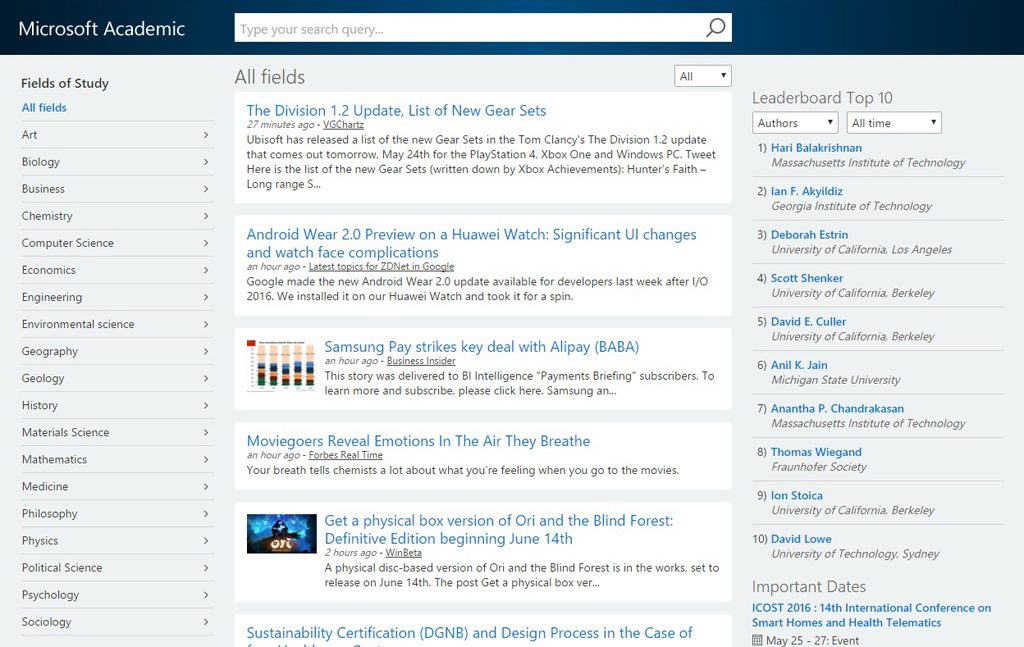
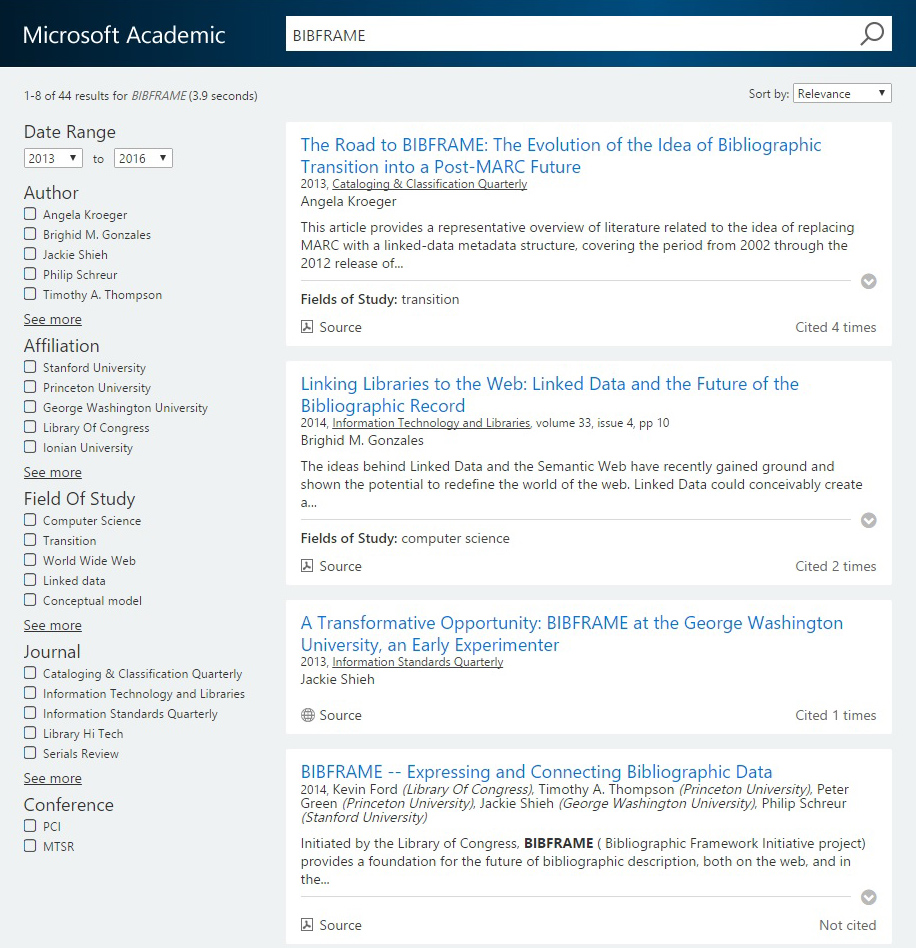
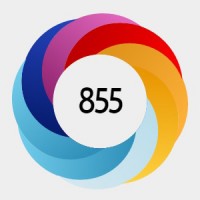
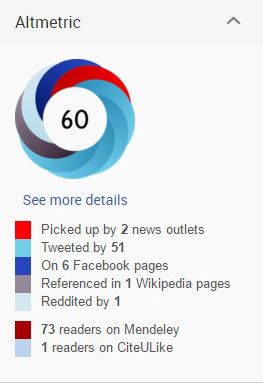 In October 2015, ProQuest announced the addition of Altmetric badges to
In October 2015, ProQuest announced the addition of Altmetric badges to 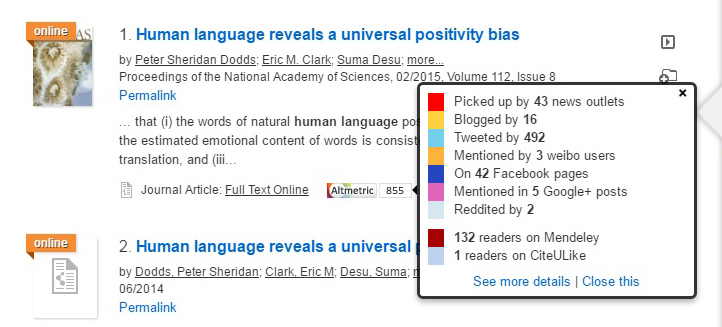

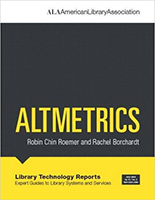 This title is actually an issue of Library Technology Reports from ALA Tech Source. The report “outlines both the promises and major obstacles faced by the field of altmetrics” as well as covers the librarian’s role in providing education and support of altmetrics. Published in 2015.
This title is actually an issue of Library Technology Reports from ALA Tech Source. The report “outlines both the promises and major obstacles faced by the field of altmetrics” as well as covers the librarian’s role in providing education and support of altmetrics. Published in 2015.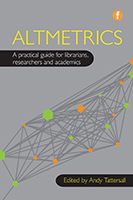 This forthcoming book gives an overview and the theory behind altmetrics. It looks at the ways libraries can utilize altmetrics and educate researchers. To be published in June 2016.
This forthcoming book gives an overview and the theory behind altmetrics. It looks at the ways libraries can utilize altmetrics and educate researchers. To be published in June 2016.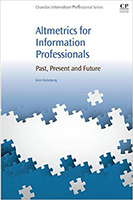 This scholarly book looks at key altmetrics research innovations. It presents the data sources used. Finally, it looks to the future to determine alternative metric trends. Published in 2015.
This scholarly book looks at key altmetrics research innovations. It presents the data sources used. Finally, it looks to the future to determine alternative metric trends. Published in 2015.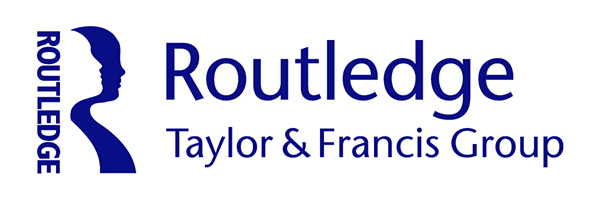
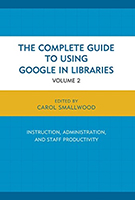 The book is divided into four parts: Research, User Applications, Networking, and Searching. Part IV on searching includes advanced search strategies, underutilized Google search tools, and evaluating the sources of search results. Other parts cover using Google services such as Google Books, Drive, Google+, Google Scholar, and Google Translate among others.
The book is divided into four parts: Research, User Applications, Networking, and Searching. Part IV on searching includes advanced search strategies, underutilized Google search tools, and evaluating the sources of search results. Other parts cover using Google services such as Google Books, Drive, Google+, Google Scholar, and Google Translate among others.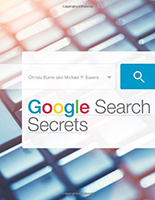 As the title suggests, this book covers the search engine Google. It goes beyond the basic search function to give practical tips and tricks on Google’s “hidden” features. The authors devote chapters to cover specific Google search services including Blogs, Books, Discussions, Images, Maps, News, Patents, and Videos. The chapter on Google Scholar is particularly relevant for academic librarians. The authors created a
As the title suggests, this book covers the search engine Google. It goes beyond the basic search function to give practical tips and tricks on Google’s “hidden” features. The authors devote chapters to cover specific Google search services including Blogs, Books, Discussions, Images, Maps, News, Patents, and Videos. The chapter on Google Scholar is particularly relevant for academic librarians. The authors created a 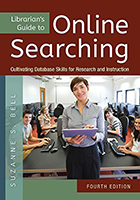 Now in its fourth edition, this popular book for librarians has been updated for 2015. The book looks into what a database is, parts of a database, and tools for searching such as Boolean logic and truncation. Later chapters discuss the different databases by subject matter. Evaluating databases is covered. Finally, the book lists eight principles of teaching databases.
Now in its fourth edition, this popular book for librarians has been updated for 2015. The book looks into what a database is, parts of a database, and tools for searching such as Boolean logic and truncation. Later chapters discuss the different databases by subject matter. Evaluating databases is covered. Finally, the book lists eight principles of teaching databases.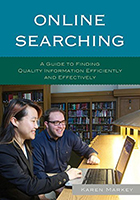 This new book covers searching online using discovery tools and research databases. It starts with the research interview and traces the steps through assessing search results. Pre-search preparation and database selection are covered before detailing specific search types: controlled-vocabulary, free-text, and known-item. The author ends with a look into the future of online searching.
This new book covers searching online using discovery tools and research databases. It starts with the research interview and traces the steps through assessing search results. Pre-search preparation and database selection are covered before detailing specific search types: controlled-vocabulary, free-text, and known-item. The author ends with a look into the future of online searching.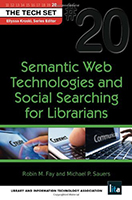 The final volume of The Tech Set from ALA, this guide goes beyond basic Internet searching. As indicated in the title, the semantic Web and finding hidden data is its main focus. Specific types of searching include location-based, multimedia, social, and semantic. Specific search examples from Google and Bing are shown. The book has a
The final volume of The Tech Set from ALA, this guide goes beyond basic Internet searching. As indicated in the title, the semantic Web and finding hidden data is its main focus. Specific types of searching include location-based, multimedia, social, and semantic. Specific search examples from Google and Bing are shown. The book has a 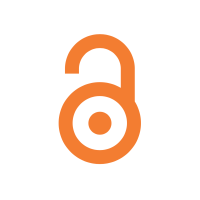 We continue our celebration of
We continue our celebration of